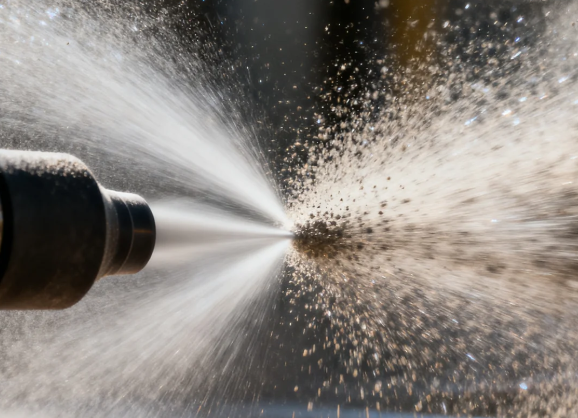Sand Blasting, also known as sandblasting or abrasive blasting, is a process of applying high pressure to push solid particles across the object surface at high speed to alter the surface roughness. The machine to complete the sandblasting operation is the sandblaster, which shoots a stream of abrasive material by a centrifugal wheel or pressurized fluid like compressed air and propelling it through the area need to be treated. The materials can be sandblasted, including aluminum, brass, silver, wood, stone, glass, and other metals.



